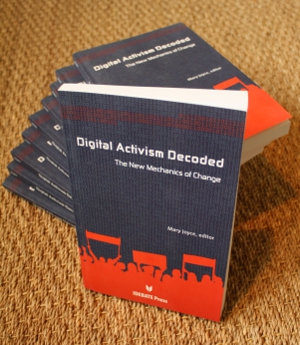This morning the Department for Culture Media and Sport (DCMS) have published a series of documents relating to the implementation of the Digital Economy Act 2010.
One of those documents, from OFCOM, describes how “Site Blocking” might be used to prevent access to websites that are involved in copyright infringement (ie: torrent sites, Newzbin, “cyberlockers” etc.).
The report appears, at a quick glance, to cover the ground pretty well, describing the various options available to ISPs to block access to websites (and sometimes to block access altogether — since much infringement is not “web” based).
The site also explains how each of the systems can be circumvented (and how easily) and makes it clear (in big bold type) “All techniques can be circumvented to some degree by users and site owners who are willing to make the additional effort.”
I entirely agree — and seem to recall a story from my childhood about the Emperor’s New Blocking System — and note that continuing to pursue this chimera will just mean that time and money will be pointlessly wasted.
However OFCOM duly trot out the standard line one hears so often from the rights holders: “Site blocking is likely to deter casual and unintentional infringers and by requiring some degree of active circumvention raise the threshold even for determined infringers.”
The problem for the believers in blocking is that this just isn’t true — pretty much all access to copyright infringing material involves the use of tools (to access the torrents, to process NZB files, or just to browse [one tends not to look at web pages in Notepad any more]). Although these tools need to be created by competent people, they are intended for mass use (point and click) and so copyright infringement by the masses will always be easy. They will not even know that the hurdles were there, because the tools will jump over them.
Fortuitously, the DCMS have provided an illustration of this in their publishing of the OFCOM report…
The start of the report says “The Department for Culture, Media and Sport has redacted some parts of this document where it refers to techniques that could be used to circumvent website blocks. There is a low risk of this information being useful to people wanting to bypass or undermine the Internet Watch Foundation‟s blocks on child sexual abuse images. The text in these sections has been blocked out.”
What the DCMS have done (following in the footsteps of many other incompetents) is to black out the text they consider to be sensitive. Removing this blacking out is simple but tedious … you can get out a copy of Acrobat and change the text colour to white — or you can just cut and paste the black bits into Notepad and see the text.
So I confidently expect that within a few hours, non-redacted (non-blocked!) versions of the PDF will be circulating (they may even become more popular than the original — everyone loves to see things that someone thought they should not). The people who look at these non-blocked versions will not be technically competent, they won’t know how to use Acrobat, but they will see the material.
So the DCMS have kindly made the point in the simplest of ways… the argument that small hurdles make any difference is just wishful thinking; sadly for Internet consumers in many countries (who will end up paying for complex blocking systems that make no practical difference) these wishes will cost them money.
PS: the DCMS do actually understand that blocking doesn’t work, or at least not at the moment. Their main document says “Following advice from Ofcom – which we are publishing today – we will not bring forward site blocking regulations under the DEA at this time.” Sadly however, this recognition of reality is too late for the High Court.

